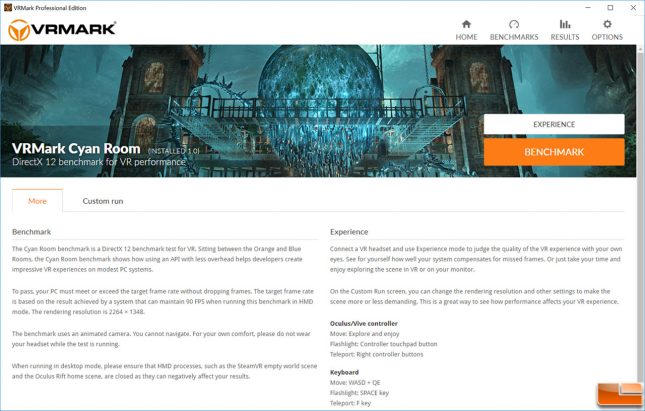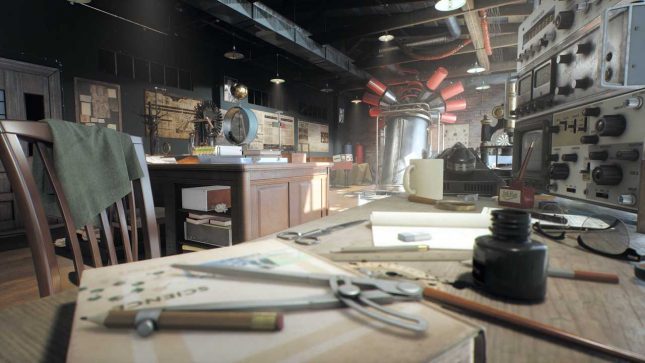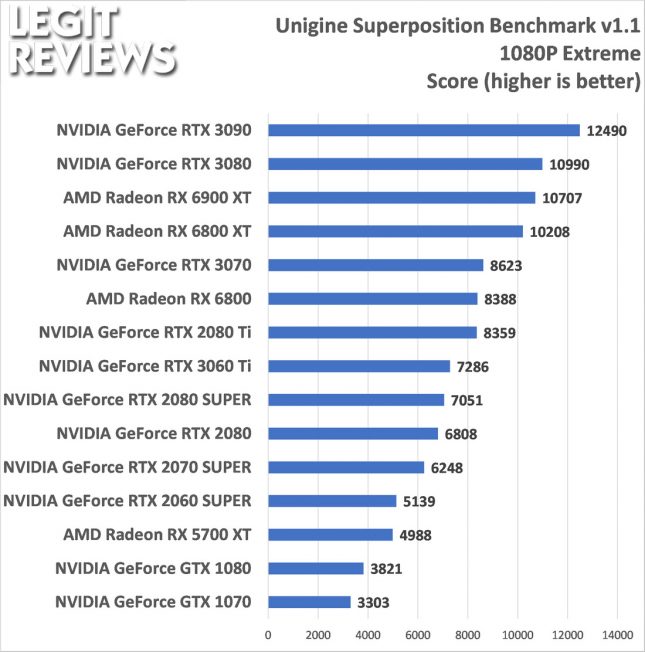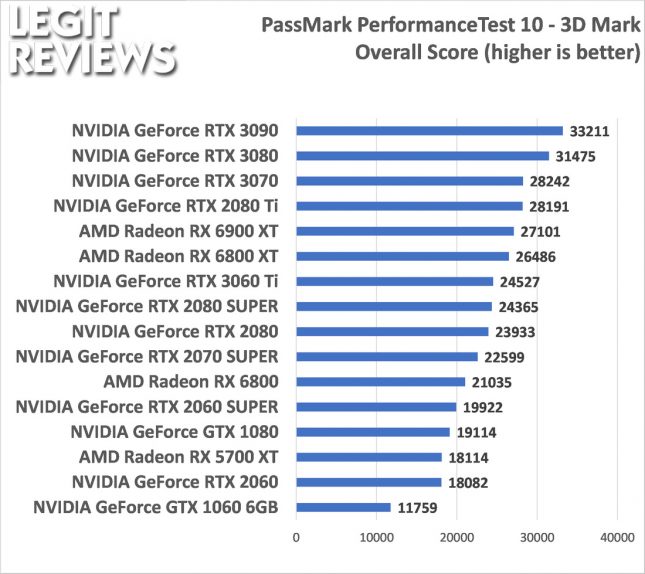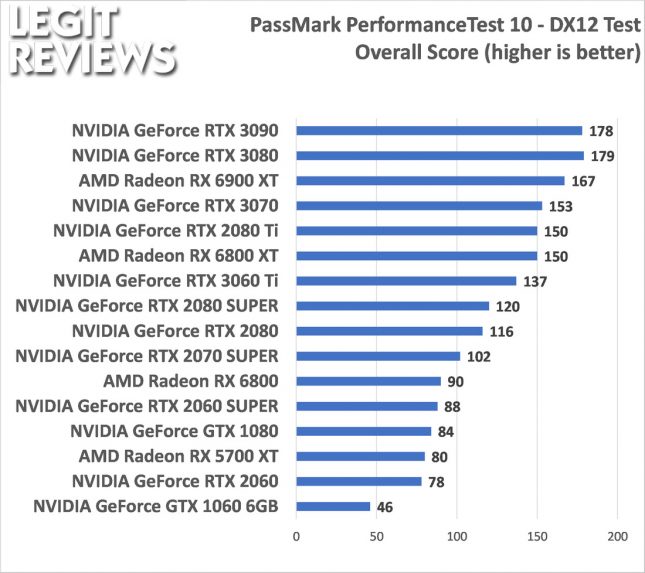AMD Radeon RX 6900 XT Video Card Review
VRMark, Superposition, PassMark
VRMark is a relatively new benchmark aimed at those that might be thinking about buying an HTC Vive or an Oculus Rift and knowing what hardware will give them the best VR gaming experience. VRMark includes two VR benchmark tests that run on your monitor, no headset required, or on a connected HMD. At the end of each test, you’ll see whether your PC is VR ready, and if not, how far it falls short.
We used the Cyan Room to benchmark our cards as it is a DirectX 12 benchmark. Sitting between the Orange and Blue Rooms, it features a large, complex scene and many eye-catching effects. Cyan Room shows how using an API with less overhead can help developers deliver impressive VR experiences even on modest PC systems. The target frame rate for the Cyan Room benchmark when running in desktop mode is 109 FPS. The rendering resolution is 2264 1348, which is 1132 1348 per eye.
Superposition Benchmark
UNIGINE introduced the Superposition Benchmark in April 2017 and it contains a benchmark based on the UNIGINE 2 Engine that is pretty tough on modern graphics cards.
We ran the Superposition Benchmark performance test with the 1080P Extreme preset.
PassMark PerformanceTest 10
PerformanceTest has been around for more than two decades and is one of the easiest full system PC benchmarks that you can run. Once you have run the test you can then compare your results with over a million computers submitted by other PerformanceTest users around the planet. The benchmark measures CPU, GPU, Memory and storage drive performance to give you a good idea on how the hardware in your system performs. We ran the full 3D MARK benchmark and charted the results for the overall score, DX12 test and the GPU Compute test.

